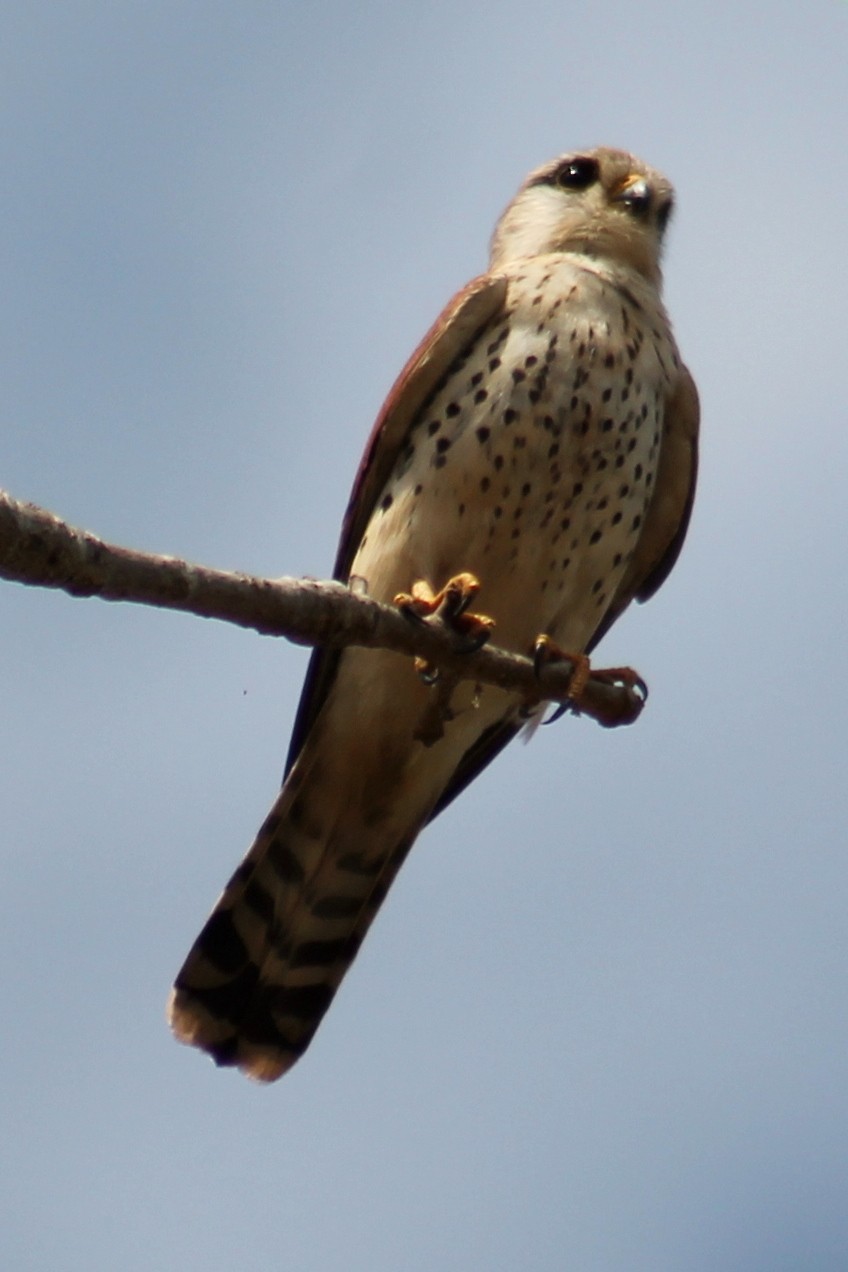Malagasy Kestrel
A species of True Falcons, Also known as Madagascan Kestrel Scientific name : Falco newtoni Genus : True Falcons
Malagasy Kestrel, A species of True Falcons
Also known as:
Madagascan Kestrel
Botanical name: Falco newtoni
Genus: True Falcons
Content
Description General Info
 Photo By Heinonlein , used under CC-BY-SA-4.0 /Cropped and compressed from original
Photo By Heinonlein , used under CC-BY-SA-4.0 /Cropped and compressed from original Description
It can reach a size of 30 cm. The wings are 180 mm to 195 mm at the males and 188 mm to 203 mm at the females. The males can reach a weight between 112 and 118 grams. The weight of the females is up to 128 grams. The head and the nape of the males is rufous grey with dark streaks. A dark moustachial streak running from the basis of the bill backwards to sides of the throat. The upperparts and the wingcoverts are chestnut with black spots. The uppertail coverts are grey with blackish spots. The long flight feathers are blackish brown, the inner webs are covered with white and chestnut spots. The underparts are whitish. The short flight feathers are chestnut coloured and dark banded. The chest, belly and underwing coverts are covered with black spots. The tail is grey coloured. It has six to seven narrow black bars and a broad subterminal bar. All feathers have white tips. In addition there is a rufous phase. At this morph the head and nape are almost black. Body and underwing coverts are dark chestnut brown with black streaks and spots. The throat exhibits a buffish-white hue. The underwing coverts are greyish white and spotted black. The head of the females is stronger chestnut coloured. The underparts are more spotted and the tail is brown with black bars. Both sexes exhibits a slate grey bill with a black tip. The cere is yellow. The legs are either yellow or bright orange (rufous morph). The juveniles are similar coloured as the females. 
Size
25 cm
Nest Placement
Tree
Feeding Habits
Malagasy Kestrel primarily feeds on insects mid-flight but also preys on small ground-dwelling birds, frogs, and mammals. It hunts from perches or by hovering, usually at dawn or dusk, showcasing its versatile feeding behaviors and predation techniques.
Habitat
The malagasy Kestrel is typically found in open country up to elevations of 2450 meters, with a preference for lower altitudes generally below 1800 meters. Its habitats include natural grasslands, marshes, and plantations. In recent times, the malagasy Kestrel has adapted well to agricultural areas, frequenting croplands like rice paddies and the surroundings of towns and villages. It is also known to nest in urban environments, utilizing spaces such as building eaves. While uncommon in dense forests, on Aldabra, the malagasy Kestrel favors palm groves and mixed scrub habitats.
Dite type
Carnivorous
General Info
Feeding Habits
Bird food type
Distribution Area
The Malagasy kestrel has a large range of occurrence and it is native to Madagascar, Mayotte, and the Comores. It is a breeding resident on Madagascar where it occurs in savannas and wetlands but also artificial landscapes in the vicinity of human settlements in altitudes from 0 to 2000 asl. It is uncommon in forests. The habitat of the Aldabra kestrel is the Aldabran Island of Grande Terre but there is also an evidence for the island of Anjouan at the Comores. 
Species Status
Not globally threatened.
Scientific Classification
Phylum
Chordates Class
Birds Order
Diurnal Birds of Prey Family
Falcons and caracaras Genus
True Falcons Species
Malagasy Kestrel